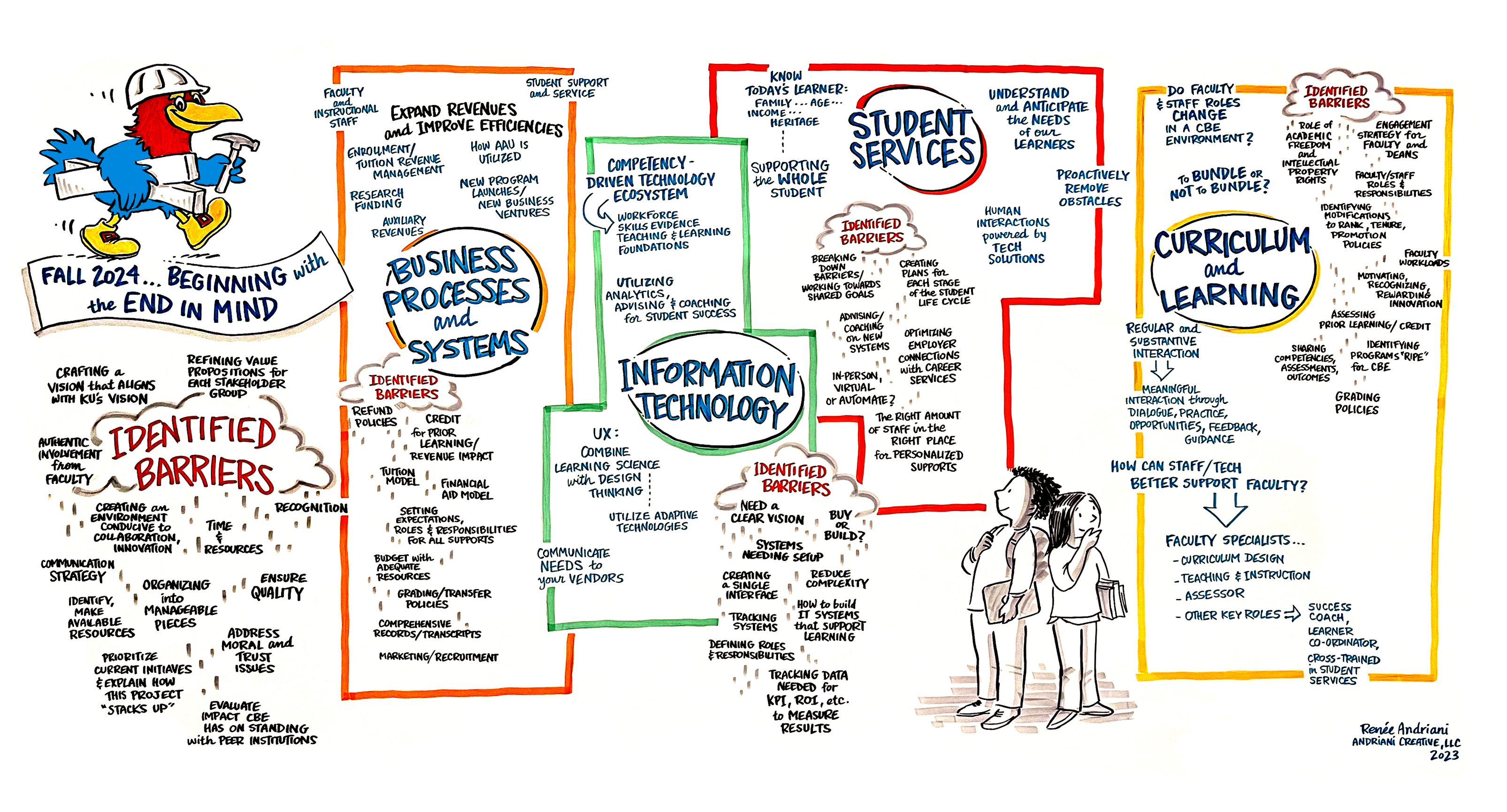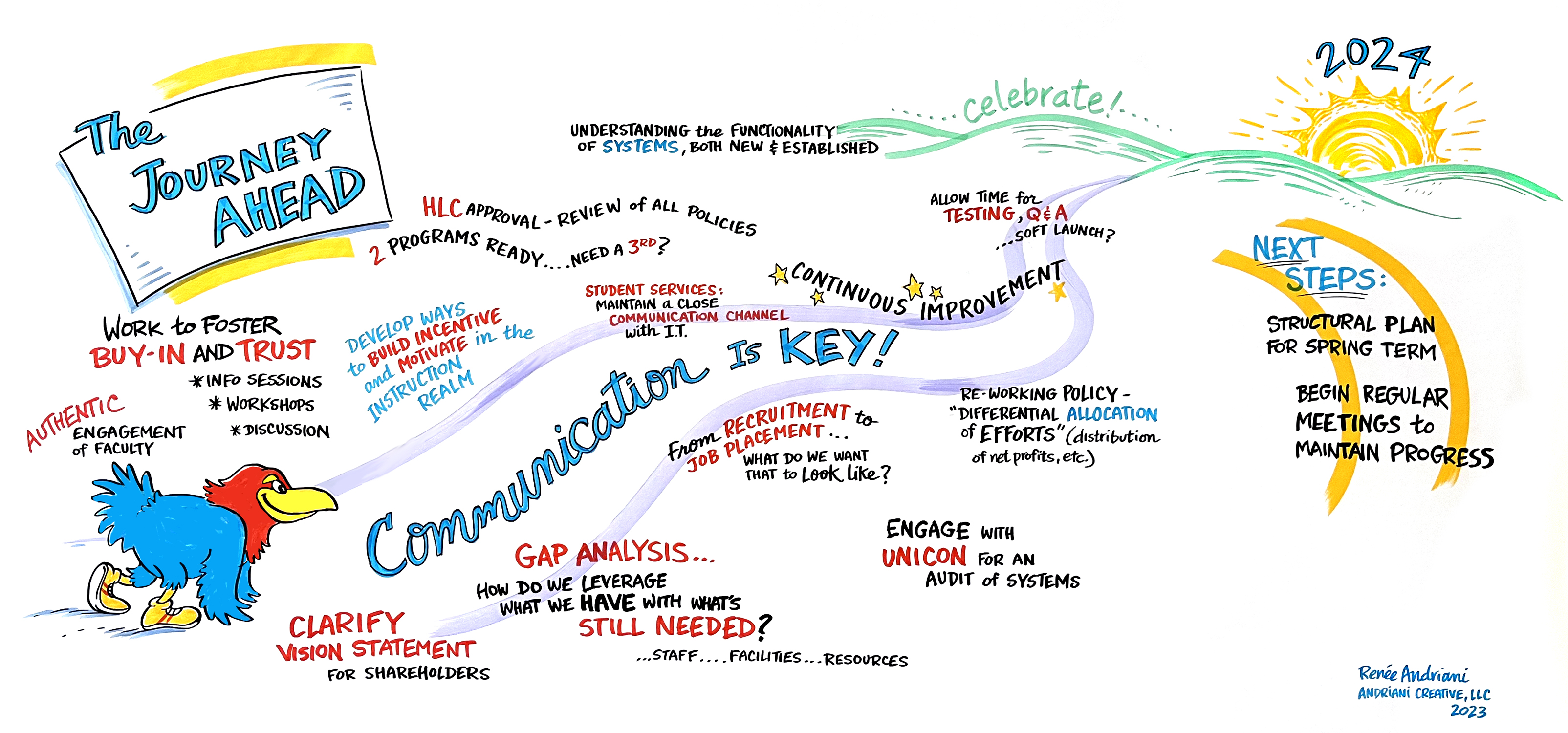Overview of Competency-Based Education at KU

Why CBE?
Competency-Based Education (CBE), as we’ve come to think of it, has roots going back three decades and elements of CBE have existed for longer in certain programs such as second language study and trades.
And now, due to a convergence of factors, many colleges are integrating CBE into their traditional education structures and expanding their current CBE or CBE-like programs. This expansion of Competency-Based Education tracks with the latest research in the science of learning and pedagogy.
Colleges draw on Competency-Based Education for several reasons, including:
- Competency-Based Education programs offer flexibility for both faculty and students.
- Demonstration of skill appeals to employers, especially those in fields with specific required training and knowledge.
- Competency-Based Education programs allow a customizable path to graduation, within the confines of established objectives and goals (i.e., competencies).
- Crediting students for existing competencies can save time and money for the student, for the institution, and for faculty.
- More students, especially those from non-traditional and disadvantaged backgrounds, are drawn to university-level study as result of the flexibility of CBE programs.
- CBE can offer more revenue for universities and their staff.

There’s never been a more appropriate time to consider CBE at KU. Many lessons were learned during the COVID-19 pandemic as the university moved to online learning for all. One of the most powerful lessons was that learning can, and did, happen anytime and anywhere. Educators continued to teach, and students continued to learn from all parts of the world. The notion that teaching and learning only takes place within a classroom was debunked. As KU continues to emerge from the pandemic, our resolve is to build on the rich history and success of our research/residential academic programs in Lawrence and expand our offerings to a population that desires a KU education but wants to do it on their schedule and from their location. These students do not merely want an online class here or there, but a fully online program which includes equitable and meaningful outcomes, learner flexibility and agency, and alignment with business and industry needs.
CBE at KU Design Charette
In February of 2023, representatives from faculty, administration, technology, student success, and business convened for the Competency-Based Education Design Charrette. This two-day event established key objectives in integrating CBE at KU, with a roadmap for developing considered, research-informed recommendations, split across five separate teams: Student Success, Business Processes, Information Technology, Curriculum & Learning Transformation, and Leadership.
The charrette was the result of key administrative personnel and faculty recognizing the value of Competency-Based Education and the urgency to incorporate it at The University of Kansas. Because of the renown of its School of Education & Human Sciences, and with supporting centers such as the Center for Competency-Based Education (CB3e) and Assessment & Technology Services (ATS), KU is well-positioned, more than many other institutions, to develop a Competency-Based Education program.
The development process of the Jayhawk Flex Competency-Based Education initiative has been a highly collaborative one, drawing on the wealth of knowledge, skills, and expertise across several colleges and staff at the University of Kansas.

Jayhawk Flex Puts KU at The Cutting Edge of Education
The American Institutes for Research conducts the National Survey of Postsecondary Competency-Based Education (NSPCBE). Results of their 2020 survey indicated that the primary institutional incentive for CBE is the belief that CBE will (1) better support workforce readiness and (2) improve learning outcomes. In particular, CBE has been identified as a high-leverage practice for addressing persistent inequities in educational attainment for those learners historically underrepresented in higher education.
Between 2018 and 2020, 128 higher education institutions reported offering one or more CBE programs, with a total of 1,057 across the institutions. Most institutions offered only a subset of programs, most often in the health professions, business administration, and computer and information science. Often programs targeted adult learners. More than 80 percent of the institutions expected the number of CBE programs to increase over the next five years.
The approach KU is pursuing will have more integration than other university examples, drawing on existing faculty to help shape and facilitate the program. This will make KU the first R1 university to have this level of CBE integration.
